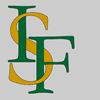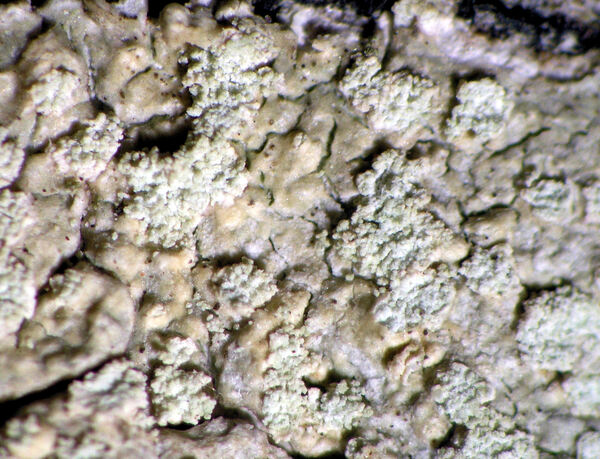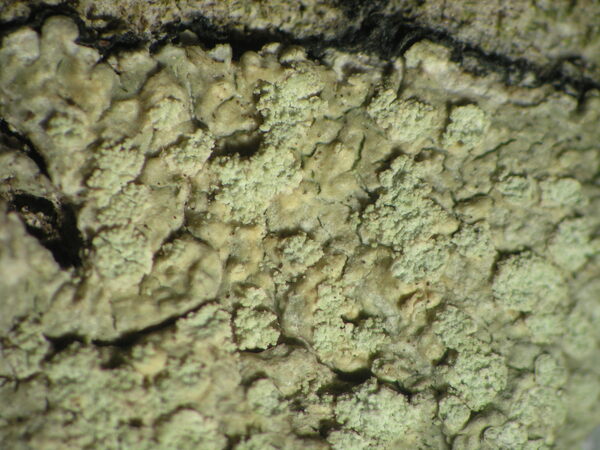Ochrolechia dalmatica (Erichsen) Boqueras
in Boqueras & al., Cryptogamie, Mycol., 20: 313, 1999. Basionym: Pertusaria dalmatica Erichsen - Rabenh. Krypt.-Flora, 9, 5, 1: 540, 1936.
Synonyms:
Distribution: N - Emil (Boqueras & al. 1999, Fariselli & al. 2020). C - Sar. S - Camp (Brunialti & al. 2013, Ravera & Brunialti 2013).
Description: Thallus crustose. episubstratic, sorediate, continuous to usually areolate-verrucose or bullate-tuberculate, grey-white, grey or grey-brown. sometimes delimited by a whitish prothallus, the tubercles usually not separated from one another, large, irregular
in shape, convex, rarely small and separated. Soralia circular to irregular, mostly arising at the tip of warts, with a more brown hue than the thallus, at first well-delimited and concave with a distinct, raised thalline rim, finally convex and sometimes confluent, bearing granular soredia. Apothecia extremely rare, lecanorine, up to 3 mm across, with a concave to flat, brown, faintly pruinose disc, a distinct parathecial ring and a thick, raised thalline margin. Thalline exciple corticate, the cortex well-differentiated, expanding at the base; proper exciple well-developed; epithecium pale brown, C+ red; hymenium colourless, up to c. 300 µm high; paraphyses thin, slender, densely branched and anastomosing; hypothecium pale yellowish brown. Asci 4-6-spored, with thick, amyloid walls, without recognizable apical structures, Pertusaria-like. Ascospores 1-celled, hyaline, ellipsoid, 50-69 x 25-35 µm. Photobiont chlorococcoid. Spot tests: thallus and apothecial margin K- C+ yellow, KC+ yellow, P-; thalline medulla C-; epithecium, soredia, and upper part of proper exciple C+ red. Chemistry: cortex with variolaric acid; epithecium, soredia, and upper part of proper exciple with gyrophoric acid (major) and lecanoric acid (minor).Note: a poorly understood, rarely collected lichen, which badly deserves further study. Indicator values are tentative. It is included in the Italian red list of epiphytic lichens as “Data Deficient” (Nascimbene & al. 2013c). The record from Venezia Giulia reported by Nimis (1993: 510) was due to a misidentification.
Growth form: Crustose
Substrata: bark
Photobiont: green algae other than Trentepohlia
Reproductive strategy: mainly asexual, by soredia, or soredia-like structures (e.g. blastidia)
Most common in areas with a humid-warm climate (e.g. most of Tyrrenian Italy)
Poorly known taxon in need of further study
Commonnes-rarity: (info)
Alpine belt: absent
Subalpine belt: absent
Oromediterranean belt: absent
Montane belt: absent
Submediterranean belt: extremely rare
Padanian area: absent
Humid submediterranean belt: very rare
Humid mediterranean belt: very rare
Dry mediterranean belt: absent

Predictive model
Herbarium samples
Growth form: Crustose
Substrata: bark
Photobiont: green algae other than Trentepohlia
Reproductive strategy: mainly asexual, by soredia, or soredia-like structures (e.g. blastidia)
Most common in areas with a humid-warm climate (e.g. most of Tyrrenian Italy)
Poorly known taxon in need of further study
Commonnes-rarity: (info)
Alpine belt: absent
Subalpine belt: absent
Oromediterranean belt: absent
Montane belt: absent
Submediterranean belt: extremely rare
Padanian area: absent
Humid submediterranean belt: very rare
Humid mediterranean belt: very rare
Dry mediterranean belt: absent

Predictive model
| Herbarium samples |
 INDEX FUNGORUM
INDEX FUNGORUM
 GBIF
GBIF



